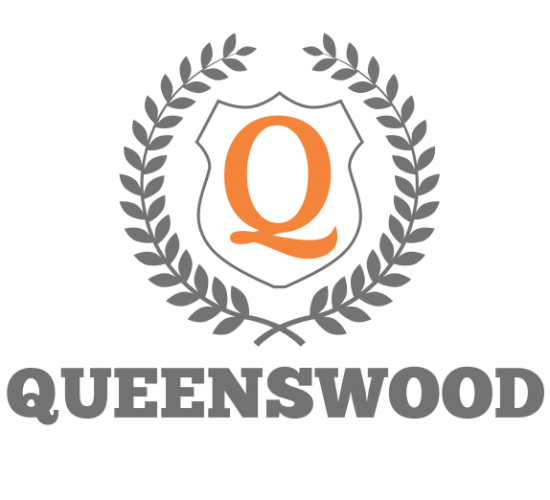
English as a Second Language Level 1 – ESLAO course builds on students’ previous education and language knowledge to introduce them to the English language and help them adjust to the diversity in their new environment. Students will use beginning English language skills in listening, speaking, reading, and writing for everyday and essential academic purposes. They will engage in short conversations using basic English language structures and simple sentence patterns; read short adapted texts; and write phrases and short sentences. The course also provides students with the knowledge and skills they need to begin to adapt to their new lives in Canada.

One language sets you in a corridor for life. Two languages or a Second language opens every door along the way.
| Unit | Titles and Descriptions | Time and Sequence |
|---|---|---|
| 1 | Me And My Community: In this unit, students will demonstrate an understanding of basic school routines, the school and community environment, and expectations of the Ontario Catholic educational process. Using experiential learning and real life situations, students will be introduced to basic language structures (e.g. present tense, present continuous, prepositions, and simple punctuation), and vocabulary of school and community. In the culminating activity students will review all materials through a creative and collaborative project. This unit supports other units in that it provides the basis for successful transition to life in Canada. |
Time and Sequence |
| 2 | Day By Day: In this unit, students explore the role of the family in the Catholic community as well as a number of everyday survival themes and routines. Students develop vocabulary, knowledge of both oral and written English language patterns including skills in grammar and punctuation. This unit supports other units in that it prepares students for common Canadian activities. |
25 Hours |
| Mid-Term Assignment | ||
| 3 | Canadian Life: In this unit, students will demonstrate a beginning awareness and appreciation of Canada’s regional and cultural diversity. In addition, students will begin their journey towards becoming responsible citizens who give witness to Catholic social teaching by promoting peace, justice, and the sacredness of human life. Students will continue to build on basic language structures such as simple assertive and interrogative sentences, prepositions, and adjectives, as well as developing vocabulary and Knowledge of Canada and its culture. A culminating activity will provide opportunities for review and creativity using various media. This unit supports other units by developing an understanding of Canada, thus facilitating successful integration. |
25 Hours |
| 4 | Your Story – My Story: The students read for enjoyment from a variety of sources. They interact with honesty and sensitivity to each other as members of Christ’s family. As effective communicators they speak, write, listen, and respond critically in the light of gospel values. Together the teacher and the students decide on themes for this final unit, which can include folklore, fairytales, and the immigrant experience using modified reading materials. They apply appropriate strategies to read, understand, and interpret information and ideas, and show through a variety of responses an understanding of the readings. In writing their personal stories they demonstrate correct language structures and a variety of styles as studied in the preceding units. |
25 Hours |
| Final Assignment | 5 Hours | |
| Final Exam This is a proctored exam worth 30% of your final grade. |
2 Hours |
All course material is online, no textbook purchase required. Resources and reference for course materials will be provided on course webpage. Students are expected to watch and read all lecture videos and reading materials provided and complete relevant exercises at student’s time of continence.
Reference Texts
This course is entirely online and does not require or rely on any textbook.
As in a conventional classroom, instructors employ a range of strategies for teaching a course:
In addition, teachers and students have at their disposal several tools that are unique to electronic learning environments.
All course material is online, no textbook is required. Assignments are submitted electronically. Tests are completed online at a time convenient for the student, and the course ends with a final exam which the student writes under the supervision of a proctor approved by Queenswood High school at a predetermined time and place. The final mark and report card are then forwarded to the student’s home school.
Students must achieve the Ministry of Education learning expectations of a course and complete 110 hours of planned learning activities, both online and offline, in order to earn a course credit. Students must keep a learning log throughout their course which outlines the activities they have completed and their total learning hours. This log must be submitted before the final exam can be written.
The chart below indicates some general examples of online and offline activities.
| Online Learning Activities | Offline Learning Activities |
|---|---|
| Watching instructional videos | Reading materials for course |
| Watching additional resources videos | Studying instructional material |
| Completing online timed assignments | Practicing skills |
| Contributing to Forums | Completing assignments |
| Uploading video presentations | Completing essays |
| Communicating with instructor | Preparing presentations |
| Participating in live conferences | Reviewing for tests and exams |
| Practicing through online quizzes | Researching topics on internet |
| Reviewing peer submissions | |
| Assessing peer presentations | |
| Completing online timed exam |
Students are expected to access and participate actively in course work and course forums on a regular and frequent basis. This interaction with other students is a major component of this course and there are minimum requirements for student communication and contribution.
Queenswood High School’s approach to assessment and evaluation is based on the Ontario Ministry of Education’s Growing Success 2010 document. Assessment is the process of gathering information that accurately reflects how well a student is achieving the curriculum expectations in a subject or course. The primary purpose of assessment is to improve student learning. Assessment for this purpose is seen as both “assessment for learning” and “assessment as learning”. As part of assessment for learning, teachers provide students with descriptive feedback and coaching for improvement. Teachers engage in assessment as learning by helping all students develop their capacity to be independent, autonomous learners who are able to set individual goals, monitor their own progress, determine next steps, and reflect on their thinking and learning. Queenswood High School teachers use evidence from a variety of sources in their assessment. These include formal and informal observations, discussions, conversations, questioning, assignments, projects, portfolios, self-assessments, self-reflections, essays, and tests.
Assessment occurs concurrently and seamlessly with instruction. Our courses contain multiple opportunities for students to obtain information about their progress and achievement, and to receive feedback that will help them improve their learning. Students can monitor their own success through the tracking of learning goals and success criteria throughout all courses.
Summative “assessment of learning” activities occur at or near the end of periods of learning. Evidence of student achievement for evaluation is also collected over time from different sources, such as discussions, conversations and observation of the development of the student’s learning. Using multiple sources of evidence increases the reliability and validity of this evaluation. The evaluations are expressed as a percentage based upon the levels of achievement.
Growing Success articulates the vision the Ministry has for the purpose and structure of assessment and evaluation techniques. There are seven fundamental principles that ensure best practices and procedures of assessment and evaluation by Queenswood High School teachers. Assessment and evaluations:
The Final Grade
The evaluation for this course is based on the student’s achievement of curriculum expectations and the demonstrated skills required for effective learning. The percentage grade represents the quality of the student’s overall achievement of the expectations for the course and reflects the corresponding level of achievement as described in the achievement chart for the discipline. A credit is granted and recorded for this course if the student’s grade is 50% or higher. The final grade for this course will be determined as follows:
The general balance of weighting of the categories of the achievement chart throughout the course is:
| Knowledge and Understanding | 25% |
| Thinking | 25% |
| Communication | 25% |
| Application | 25% |
The Report Card
Two official report cards are issued – midterm and final. Each report card will focus on two distinct but related aspects of student achievement. First, the achievement of curriculum expectations is reported as a percentage grade. Additionally, the course median is reported as a percentage. The teacher will also provide written comments concerning the student’s strengths, areas for improvement and next steps. Second, the learning skills are reported as a letter grade, representing one of four levels of accomplishment. The report cards contain separate sections for the reporting of these two aspects. The report card also indicates whether an OSSD credit has been earned.
Teachers should explore aspects of intercultural communication – for example, how different cultures interpret the use of eye contact and body language in conversation and during presentations. Teachers should be aware of global events that may affect students and that can also be used as opportunities for instruction.
Note: A student whose achievement is below 50% at the end of a course will not obtain a credit for the course.
The purpose of the achievement chart is to:
The achievement chart provides a reference point for all assessment practice and a framework within which achievement will be assessed and evaluated.
Get More Information About 2022 Summer School Programmes
